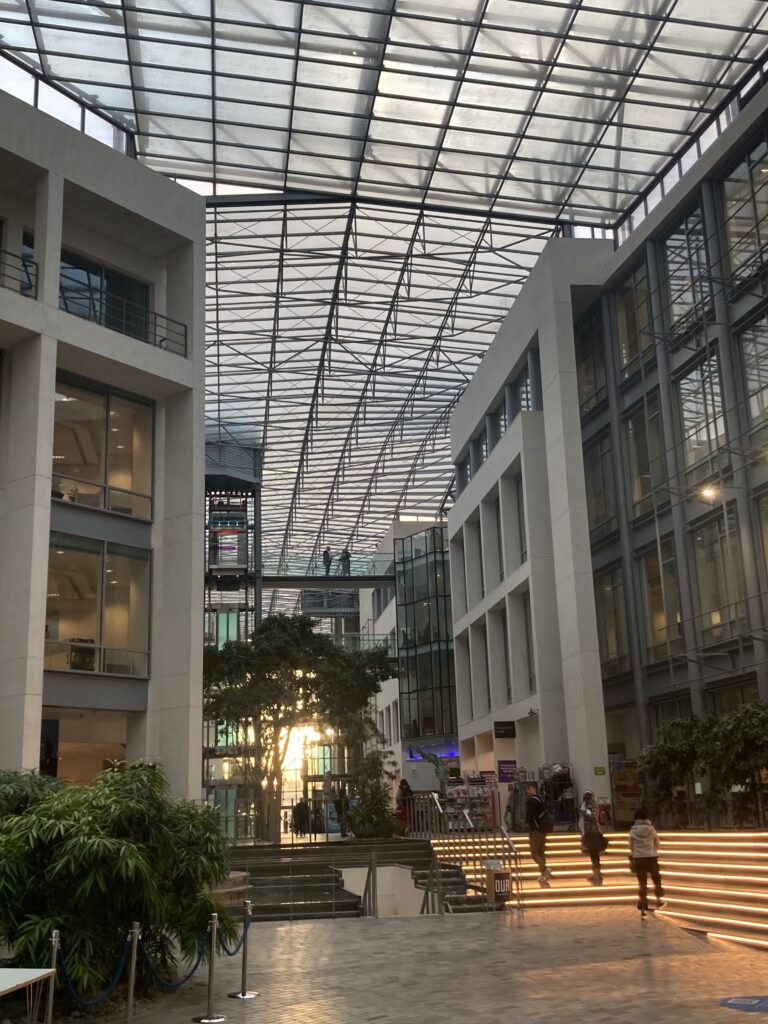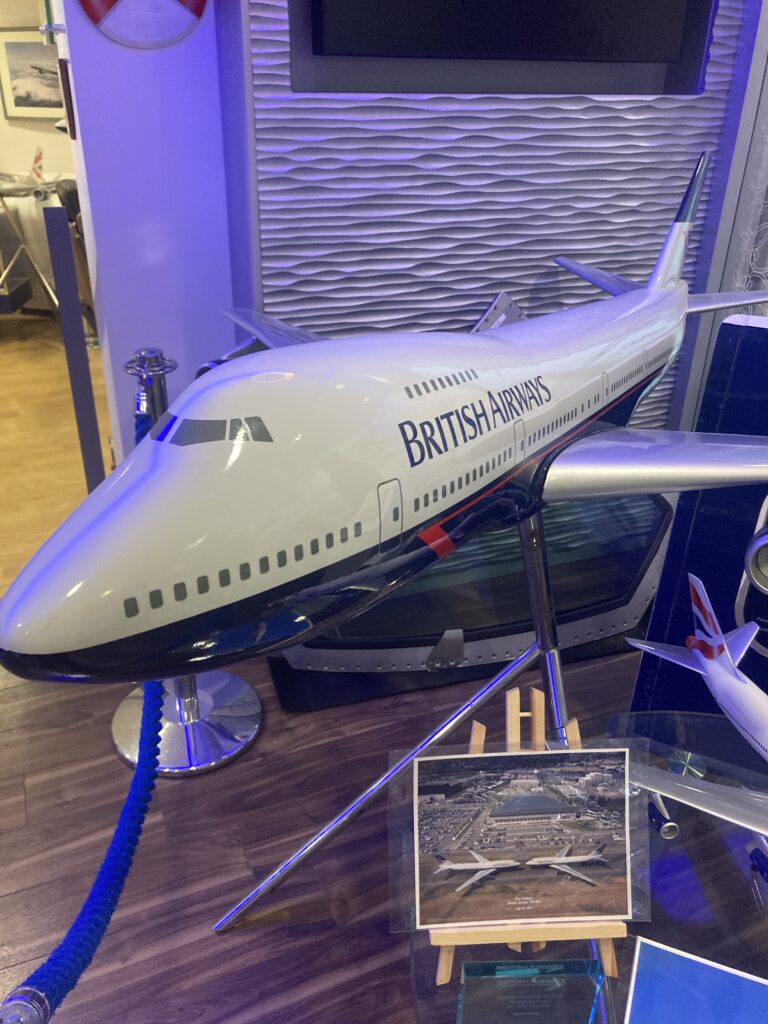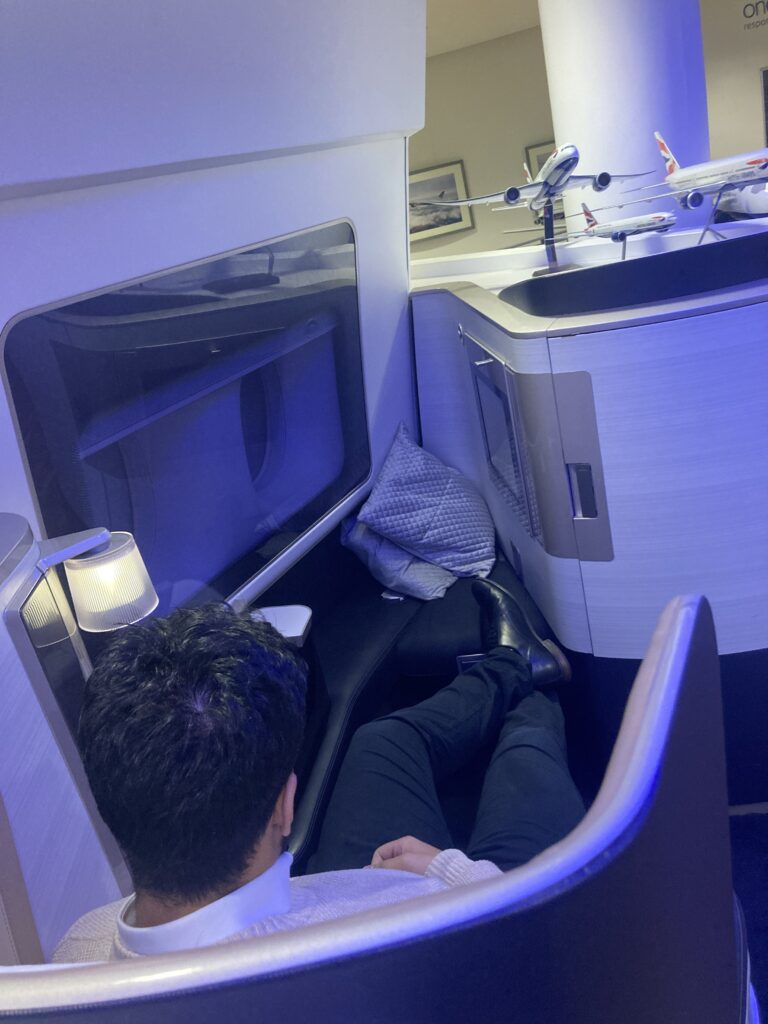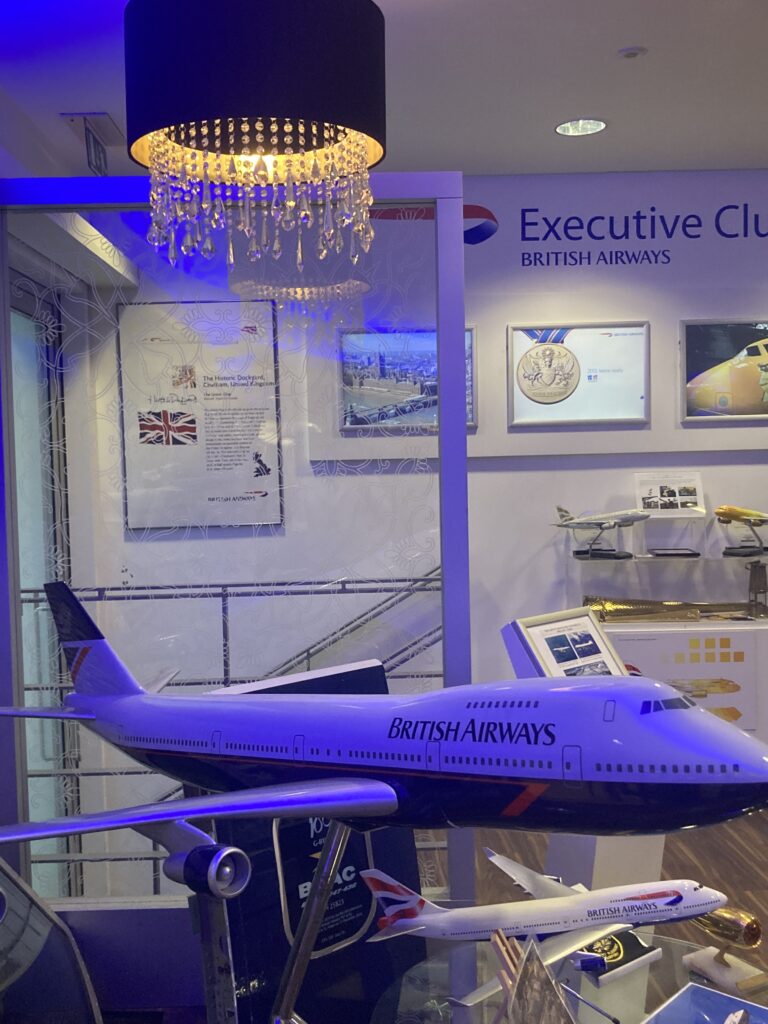Visiting British Airways, Waterside
Your Flying Future, BA Waterside.
In February 2025, I attended the ‘Your Flying Future’ Workshop at British Airways, Waterside.
In summary – It was a fantastic workshop run by British Airways at their Waterside campus – super insightful with lots of take-home messages. This blog will give you a taster of what to expect – I would highly encourage to sign up if you haven’t done so.

The afternoon kicked off with some presentations into BA – such as, the agenda, a day-in-the-life and an introduction into Speedbird Pilot Academy (SPA).
Numerical test
The cohort were then grouped into our different tables. First, we individually completed a maths test, which might not sound exciting – but it was actually quite insightful. As a group we went through the answers and the BA pilots emphasised the importance of basic numerical skills in aviation. Whether it’s calculating fuel requirements, aircraft weight and balance, or even navigation, maths is a fundamental part of a pilot’s day-to-day role.
Group work
After the test, we moved on to a project – working as a team. I always find I learn something new from working with others i.e. whether it’s a better approach to problem-solving or styles of empathy with others. I found by involving quieter members – their inputs changed the narrative completely – it brought fresh eyes to the table and we were able to work better as a team.
I won’t share too much on the project itself. The professional standards and sense of team was apparent across the cohort of 6 on our table during the group task – facilitated by BA pilot Simon Cook.
What was really useful was to witness the level of open-mindedness, care and original ideas in each others input which formed the building blocks in achieving excellence and meeting our shared goal – key behaviours that make you a super successful BA pilot. Another aspect that I enjoyed was witnessing the core competencies and CRM (Crew Resource Management) come through. CRM is all about effective communication, teamwork, and decision-making within the cockpit – that’s exactly what our team was able to show on the day. I really enjoyed getting a feel for how teamwork and communication play a huge part in the role of a pilot.
After this – each of us received feedback. A lot of it was positive with room for improvement. This gave me great food-for-thought on how to genuinely learn from past mistakes and better myself as a future commander within an airline.
The BA team at Waterside were absolutely amazing. Their energy, enthusiasm, and dedication to the workshop was inspiring – we also had the self-sponsored BA cadets come from Leading Edge to help with the day – it’s always great to see familiar faces!
One thing I identified almost instantly was the level of professionalism within BA – I could envision how their strong sense of teamwork and care for one another is reflected in the way they operate as an airline.
BA Heritage Centre –
One of the highlights of the day was getting to visit the BA Heritage Centre. This was such a special experience because I got to see the airline’s rich history up close.


The museum displayed a range of old aircrafts, and I was in awe of the iconic Concorde and 747. The Concorde is a symbol of British engineering and innovation so it was great to see. It’s hard to imagine a time when flying at twice the speed of sound was a reality for passengers – sadly, I was too busy playing lego in nursery! The 747, another iconic aircraft, was also a real standout – being one of the first jumbo jets, revolutionising air travel – sadly COVID led to their premature retirement within BA.

Aside from fangirling with the different aircrafts models – important milestones in British Airways’ history were also exhibited. Seeing how the airline has evolved over the years, from its early days to the modern, global carrier it is today, was a real privilege. It made me appreciate the legacy and incredible achievements of British Airways, and how they’ve always been at the forefront of aviation.
Asking a Question during the Q&A
Monitored Approach at British Airways
During the Q&A, I took the opportunity to ask about BA’s unique monitored approach – and the reason I asked was through sheer curiosity. It was the perfect opportunity and I’ll tell you why. There were two pilots on the panel – one who had been at BA his whole career and another who had 15 years flying with EasyJet. I was intrigued to hear how both pilots found the monitored approach strategy.

For those that are not aware. Monitored approach at British Airways refers to a training procedure where a first officer and captain are both involved in the approach. The monitored approach helps team collaboration and make sure both pilots are involved in decision-making and task delegation. This works slightly different to other airlines. Below is a snippet of the BA monitored approach policy:
It is British Airways policy to employ a monitored
approach policy. Prior to top-of-descent:
a. PF duties are undertaken by P2.
b. PM duties are undertaken by P1.
iii. For a planned manual landing PF duties revert to P1
if:
a. Stable Approach Requirements are met; and
b. Visual Reference Requirements are met.
iv. For a planned autoland PF duties revert to P1 if:
a. Stable Approach Requirements are met; and
b. The aircraft passes 1000 R.
Summary
Overall, the workshop was an incredible experience. It gave me a deeper understanding of a BA pilot’s role, the competencies required, and the importance of teamwork in the cockpit within the BA culture. Super fortunate to have been invited to be part of this workshop at British Airways, Waterside.
I would like to extend my gratitude to British Airways for making this a fulfilling day out. And to some of those who I can remember seeing or speaking to off the top of my head – Lucy Silvester, Peter Spisiak, Simon Cook, Alistair Thompson, Tim, Scott Heys-limonard, Shivani Godhania, James Edgington, Alistair Smith, Keely Smith, Jr Graham, Frederick Dai and Paul McCaughrean.

